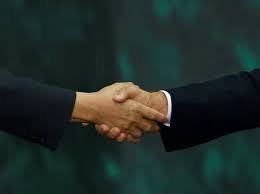No, Trump this is what BRICS actually is

BRICS nations at their 2024 Russia summit. Credit: Sikaofficial, Twitter.
Donald Trump comically labelled Spain as a BRICS nation today in an interview, leading many to question the seriousness of not only his musings, but also his 2025 presidency. But with the western world now on their toes, an imminent threat to topple the traditional economic system comes from ten nations. They are known as BRICS+ (Spain isn’t one).
The term ‘BRIC’ was actually first coined in 2001, by an economist at Goldman Sachs. Jim O’Neill had used the term in writing to suggest a collective of countries that sought to battle the western domination of wealth of the global economy, primarily the Group of Seven (G7).
The countries he spoke about are Brazil, Russia, India and China. Russian president Vladimir Putin then thought that it would be a good idea to gather these nations together to form a union.
Most Read on Euro Weekly News
BRIC formed in 2009, becoming BRICS in 2010 and BRICS+ in 2023
In 2009, he managed to do just that, as BRIC was formed. Its nations, representing the first letters of the host of nations who seek to take some of the power away from Europe and the United States, felt passionately that developing countries across the world were discarded among the overarching dominance of Europe and the US.
The specific powerhouses the collective would set out to target would be the World Bank, the G7, and the UN Security Council. South Africa fortified their prospects to tackle western power, as they joined in 2010 after China’s invitation. BRIC then became BRICS.
The group has soared to popularity of late across all nations and governments who do not form a part of the western collective, and the 2023 BRICS summit saw invitations offered to six potential new members. Egypt, Ethiopia, Iran, Saudi Arabia, and the United Arab Emirates all accepted. Argentina refused. President Javier Milei said that it “would not ally with communists.”
So, today, BRICS is now BRICS+, with its collective of ten nations making up over 45% of the world population and 35% of the global GDP. They have four primary pillars that form their philosophical backbone.
Four pillars of BRICS+:
Advocate for greater representation in global organisations: Pushing the reform, or breaking the mould, if you will, of existing groups such as the UN security council. They also sternly oppose the UN’s condemnation of Russia’s invasion of Ukraine (predictably), and pursue Iran’s nuclear war strategies wholeheartedly.
Coordinate economic policy: Rebuilding their nations after the 2008 recession has been tough work. But their annual foreign direct investment (FDI) has rocketed by over 4 times its original figure from 2001 to 2021.
Reduce reliance on the dollar: In a sensational claim, BRICS+ nations wish to create their very own currency to compete with, and ideally, topple the dollar. They feel they fall to the mercy of western sanctions through the dollar’s dominance and thus wish to de-dollarise the global economy.
Create an alternative finance system: Their New Development Bank (NDB) and Contingent Reserve Arrangement (CRA) are meant to mimic the World Bank and the International Monetary Fund respectively. They seek to utilise South Africa to reduce their dependence on traditional funding sources.
Are they progressing?
NDB is more than five times smaller than the World Bank however, so it appears they have a long way to go. Amid terrorising internal threats arising from global conflicts, the political tensions within the BRICS+ nations seem to be overshadowed by their collective ideology to form an alternative to the western financial power that undermines their own economic force. China are the sole competitors to its western rivals, establishing 17% of the world’s GDP and 11% of the global export share.
Their efforts have been downplayed in the past by Europe and the US, but have become increasingly threatening to America’s economy in particular. “Ignoring BRICS as a major policy force – something the US has been prone to do in the past – is no longer an option,” argued Tufts University scholars in 2023.
If BRICS+ will come to cement their place as competitors to the states and to Europe remains to be seen. But there will certainly be drama ahead, especially after the controversial Trump seems to not know exactly who or what they are.
For more world news, check here.


 United Kingdom
United Kingdom Argentina
Argentina  Australia
Australia  Austria
Austria  Brazil
Brazil  Canada
Canada  Germany
Germany  Ireland
Ireland  Italy
Italy  Malaysia
Malaysia  Mexico
Mexico  New Zealand
New Zealand  Poland
Poland  South Africa
South Africa  United States
United States 
























